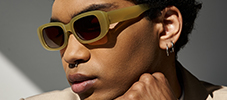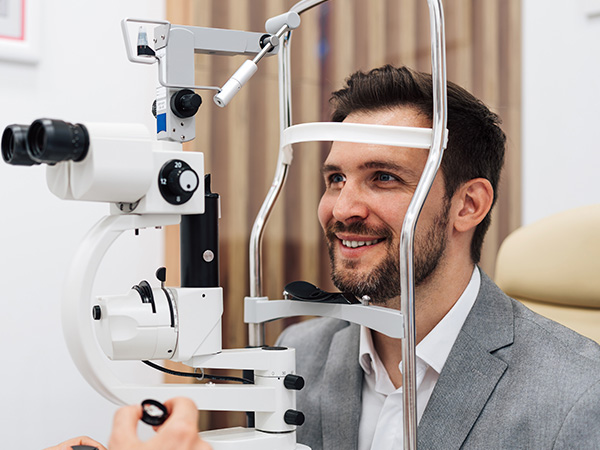
If you live in Houston and struggle with dry, burning, or irritated eyes, you’re not alone. The city’s hot climate, heavy air conditioning, and high pollen counts can all contribute to dry eye symptoms. Combined with the screen-heavy lifestyles many of us lead, it’s no surprise that more Houstonians are searching for lasting relief. At Apollo Vision Haus, we understand the local factors affecting your eye health and offer advanced, personalized treatments to help you feel and see your best.
What is Dry Eye Syndrome?
Dry Eye Syndrome occurs when your eyes either don't produce enough tears or the tears evaporate too quickly. Common symptoms include:
Stinging or burning eyes
Redness or irritation
Blurred vision
Sensitivity to light
Feeling like something is in your eye
Watery eyes
Common Causes of Dry Eyes
Several factors can lead to or worsen dry eyes, including:
Aging (especially postmenopausal women)
Long hours on digital screens
Contact lens use
Environmental triggers like wind or smoke
Allergies that cause inflammation and irritation
Medical conditions such as diabetes or autoimmune disorders
Certain medications like antihistamines or blood pressure drugs
Meibomian gland dysfunction (MGD), which affects the oil layer of your tear film
Blepharitis, a chronic inflammation of the eyelids that can block tear glands
A history of eye surgery, such as LASIK or cataract procedures
How is Dry Eye Diagnosed?
Dry eye is more complex than it may seem, and proper diagnosis is key to effective treatment. At Apollo Vision Haus, we perform a comprehensive dry eye evaluation using advanced diagnostic tools to assess the tear film’s quantity, quality, and stability. Common tests may include tear breakup time (TBUT), Schirmer’s test to measure tear production, meibography to evaluate the meibomian glands, and staining of the ocular surface to detect damage or inflammation.
Dry eye isn’t a one-size-fits-all condition; there are different types, each requiring a unique approach:
Aqueous Deficient Dry Eye: When your eyes don’t produce enough tears.
Evaporative Dry Eye: When tears evaporate too quickly due to a poor oil layer, often caused by Meibomian Gland Dysfunction (MGD).
Mixed Dry Eye: A combination of both types.
Inflammatory Dry Eye: Often associated with conditions like blepharitis or autoimmune disorders that trigger inflammation of the ocular surface.
Our diagnostic process allows us to determine what type or combination of types is present, enabling us to create a treatment plan that truly targets the root cause of your symptoms.
Best Dry Eye Treatments in Houston
Once we understand the type of dry eye you’re experiencing, we can recommend a personalized treatment plan. Here's an overview of how we treat each type:
For Aqueous Deficient Dry Eye: We may recommend prescription eye drops that help stimulate tear production. We may also recommend punctal plugs to retain moisture.
For Evaporative Dry Eye (MGD): In-office procedures to clear blocked meibomian glands (such as heat therapies or manual expression) can restore the protective oil layer in your tears.
For Inflammatory Dry Eye: We often incorporate anti-inflammatory therapies, like steroid drops or oral supplements rich in omega-3s, to calm irritation and support tear stability.
For Mixed or Severe Cases: A combination of treatments may be necessary, including both in-office procedures and at-home lifestyle changes.
In addition to these targeted treatments, we emphasize supporting eye health through practical steps such as using a humidifier, staying hydrated, limiting screen time, and maintaining proper eyelid hygiene.
Achieve Dry Eye Relief at Apollo Vision Haus
Dry eyes can be frustrating, but the right treatment plan can offer real relief. We take a personalized and comprehensive approach to diagnosing and treating dry eyes, so you can get back to seeing clearly and comfortably.
If you’re experiencing dry eye symptoms, contact Apollo Vision Haus to schedule a dry eye evaluation and find the treatment that’s right for you. Call or text (832) 800-7259 to book an appointment today.








































